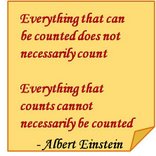I have had another brush with online qualitative research. This time it has gone beyond the two dimensional and asynchronous experiments using a discussion board into ‘real time’ and synchronous interaction with users. In the capture of information and emotion, the interviews turned out to be far weaker than I had imagined. This had little to do with the technology being used. All the basic elements were in place – both the respondent and moderator were connected to the internet via broadband at a reasonably high speed since the connection did allow a voice and video transfer. Yet I found something amiss and that was the magic or the ‘intimacy of a person-to-person interaction.’
The difference between online and offline is, I reckon, like the difference between meeting a friend in person and talking vis-à-vis talking over the phone or talking using a webcam. I am assuming one would on most days prefer a meeting in flesh and blood over a virtual one unless of course distance separates them and there is no choice but to meet in the virtual world. Now I know that talking to a researcher can in no way be compared to the feeling of bonding with a friend but the difference between the two interactions is one of degree and not of type. In both these instances, the virtual meeting seems fainter in terms of exchange of emotion, there is a restlessness to move on since many extraneous factors get in the way and the interaction is feeble where it comes to the expression of non verbal cues and para-language – the last two factors help us ‘make sense’ of what we hear. For instance, the sentence ‘could you send me the documents please, I am waiting’ could be a plea or an assertion depending on the tone and the manner in which the person spoke, along with his or her facial gestures. Though online interviews do capture tone and manner of speech to a certain extent, that is assuming there is no lag in voice transfer, the richness of non verbal cues get lost in frozen images that refresh every once in a few minutes. The presence of a time lag cannot be ruled out altogether and it only adds to fatigue for both people in the conversation. Besides, the fact that one has to constantly speak – pause – hear – pause – speak which can get difficult to keep track of, it breaks down the flow of energy that is created with the natural build up of a conversation. As an observer of an online interview, I found that the moderator was finding it difficult to keep the respondent engaged.
It is relatively easier to keep the respondent engaged and involved in a real world context, since in real life two people sitting face to face often tend to mirror the reactions or body movements of one another. Very often at a restaurant, you’d often find yourself picking up a glass of water, after the person sitting opposite you has done so or vice versa, though till that point, you did not feel the urge. Similarly it is easy to get a person’s attention in an interview by altering your posture – sitting upright or looking eye to eye can often shake the boredom or fatigue that respondents may face.
This lack of control extends beyond the respondent, even to the research environment. Face to face research often happens in a contrived environment and it is almost second nature for a researcher to draw the curtains (to block of excess light) or shut the windows to keep the noise at bay – in her preparation for the discussions. In the virtual interviews, I observed that one had little control over the presence of others in the room, excessive lights that obscured the video transfer, and the clack-clack of the keyboard as the respondent exchanged a line or a smile with his online friends as he aired his views. This has been a classic debate with many researchers whether it is easier on the respondent to be spoken to in the comfort of his own home environment. Though the usual one way mirror research facility is contrived, it scores points, since there is only so much that you can tell a respondent in his home – without sounding rude or completely putting him off.Warts and all, online research techniques have made some headway, in fact I would not be wrong if I say that it’s becoming the next big buzz word in the research circles. But that’s where precisely the problem lies – when a ‘method’ starts to gain importance and overrides other elements in the research design. For me qual research, has always been, a discipline for understanding the world in which people live and the closer the research method is in reflecting this reality, the better is the understanding. So, online techniques should be like any other, used judiciously. While trying to explore public opinion about a company or a product, reading blogs or discussion boards or other online content about them is like taking advantage of the information that is ‘already there’ and putting it to use. But when the online medium is pressed into service where conventional research techniques could have been used, comparisons about its efficacy are bound to happen.
Categories: Online Research_qualitative research,online research,

No comments:
Post a Comment